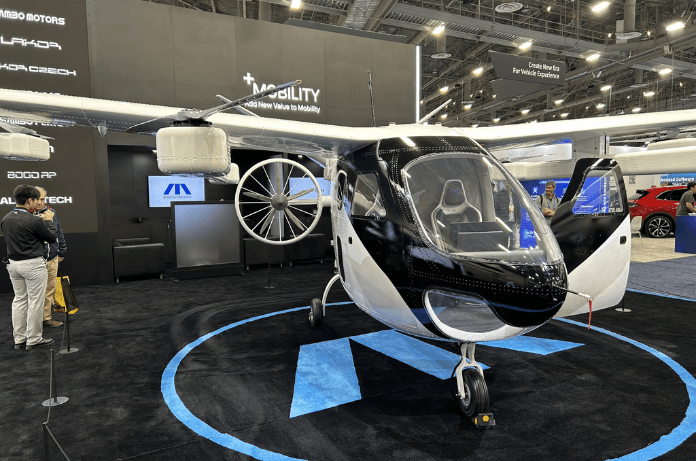Sambo Motors, a South Korean innovator, has unveiled its groundbreaking hybrid aircraft, the HAM III-2, at CES 2025. This next-generation two-seater is a major upgrade from its predecessor, the HAM III-1, offering enhanced passenger capacity and advanced performance. The HAM III-2 could revolutionize city-to-city taxi services, setting the stage for a cleaner, more efficient era of air travel.
Hybrid Power: The Future of Flight
One of the most exciting features of the HAM III-2 is its dual power system. When it takes off vertically, the aircraft uses battery power, which reduces noise and emissions. Once it reaches the sky, it switches to hydrogen cells for horizontal flight. This clever design reduces the weight and energy needed to fly, making it more efficient than traditional aircraft.
This aircraft has a wingspan of 9 meters, a height of 4.5 meters, and weighs 850 kilograms. Despite being larger than the previous model, it remains light enough for urban flights. It is efficient enough to handle various commercial and military tasks. As per reports, the HAM III-2 could be used for everything from delivering messages to short-distance commercial trips between cities.
The HAM III-2 uses four propellers for vertical lift and two large rear propellers for forward movement. This setup allows it to fly at speeds of up to 112 mph (180 km/h), with a range of 62 miles (100 km) and a flight time of 40 minutes. These capabilities make it ideal for short flights within cities, helping reduce traffic congestion and pollution.
Testing and Certification
Sambo Motors plans to begin testing the HAM III-2 in the United States in early 2025. These tests will take place in desert areas, helping the company assess how the aircraft performs in different conditions. The tests will include checking how the aircraft handles different flight maneuvers like takeoff, descent, and turns.
Flying Car with #hydrogencells and #batteries powered capabilities.
Credit: Michel pic.twitter.com/XxOQMYIpAC
— Big Moves (@bigmovesltd) January 9, 2025
Because South Korea doesn’t yet have regulations for testing hydrogen-powered flights, Sambo Motors is conducting these tests abroad. This is a key step in demonstrating the aircraft’s potential and in preparing for approval from regulators both in South Korea and around the world. Sambo is also working with both the Korea Office of Civil Aviation and the U.S. Federal Aviation Administration (FAA) to get the necessary certifications for commercial flights.
Changing the Landscape of Travel
What makes the HAM III-2 stand out is its mix of hybrid power and hydrogen cells. This combination not only gives the aircraft a longer range but also helps solve the problem of heavy batteries in electric flight. This makes the HAM III-2 a promising solution for short flights within cities. It reduces the need for ground transportation while being more environmentally friendly.
Although the aircraft has not yet made its first flight, Sambo Motors expects to achieve this milestone by the end of the year. Once it does, it will bring the company one step closer to offering hybrid air travel as an absolute alternative to traditional transportation.
With its innovative design and the push for cleaner, greener travel, the HAM III-2 could be a game-changer in urban air mobility. As technology continues to improve, we might soon see a future where aircraft like the HAM III-2 are flying above our cities, offering a safe, efficient, and eco-friendly way to travel.
The Future of Air Travel: A New Era of Clean and Efficient Flight
As these technologies progress, the sky’s the limit for urban air travel. With the ongoing testing and regulatory approval processes, we could soon see a world where flying taxis and hybrid aircraft are part of our daily lives. Accordingly transforming how we move around cities and reducing congestion on the ground.

